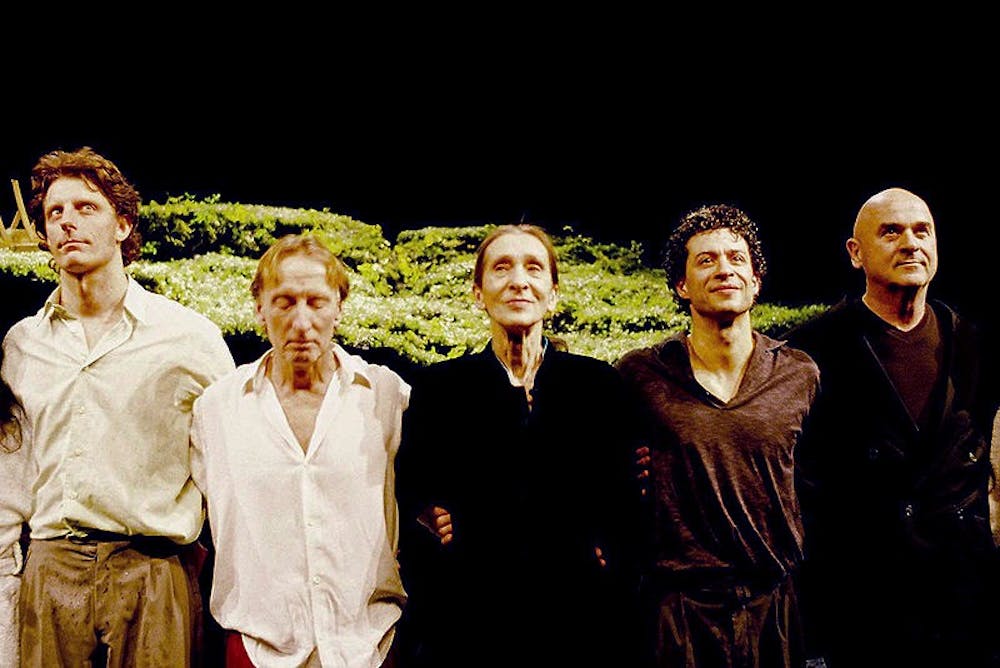This Friday, Wim Wenders’s 2011 film Pina will screen for free at 7:30 p.m. at the North Carolina Museum of Natural Science in Raleigh. The screening, a joint effort between the Franklin Humanities Institute and the Program in the Arts of the Moving Image, brings a rare opportunity to the Duke community to see an award-winning film in its original 3D format.
The screening is the second installment in a two-part series on 3D cinema. Last Friday, 3D expert Barbara Klinger spoke about the current uses of 3D in mainstream cinema. While she doesn’t endorse the dichotomy, she described two perceived camps of 3D filmmaking: so-called ‘prestige’ directors and their kitschier, genre-based counterparts. Horror, action and sci-fi filmmakers who work in 3D tend to focus on what is known as negative parallax, with images projecting towards the audience. Axes, arrows or vomit flying at the viewers from the screen is the epitome of negative parallax. Positive parallax, however, is just the opposite, with 3D illusion creating depth behind the plane of the screen. Directors such as Martin Scorsese, Ridley Scott and Wenders have shown us the subtler potential of 3D cinematography. Scorsese utilized the full range of positive and negative parallax in his 2011 film Hugo, but any negative parallax was tactful, deliberate and understated. While sci-fi films are known for “comin’-at-ya” 3D effects, Scott opted for a subtler, more artful touch in his 2012 space thriller Prometheus. He tapped into the sense of depth and expansiveness allowed by 3D, especially in wide-open exterior shots with big horizons, by employing positive parallax. So-called ‘prestige’ directors tend to utilize parallax in a way that makes you forget you are watching in 3D, furthering the sense of cinematic immersion.
But it’s important to remember 3D is just one tool among many to create the illusion of depth on-screen. Markos Hadjioannou, Assistant Professor of Literature at Duke, led the efforts to bring Pina back to the Triangle after a short initial run last spring. He noted that “3D continues with the tradition of seeking depth,” a practice that goes back at least to the likes of Alfred Hitchcock and Orson Welles. Hadjioannou suggested that we not “view it as a huge technological breakthrough” but rather as another step in the development of modern cinematic technology.
Pina is a prime example of what some consider to be high-brow 3D (again, a problematic distinction to draw). “Pina is a great example of a film that achieves a different use, or a more artistic use, of [3D] technology,” Hadjioannou said. By employing mostly positive parallax, Wenders focuses not on flinging props at the audience but instead on depth behind the subjects, members of the Tanztheater Wuppertal, a German dance troupe. The film excerpts choreography by Pina Bausch, a leading Tanztheater-style choreographer who died in 2009, as well as including interviews about her life. When Pina first came out, it was widely lauded, receiving uniformly positive reviews (a whopping 95% on Rotten Tomatoes) and an Academy Award nomination for Best Documentary Feature. Hank Okazaki, the program coordinator for Screen/Society, wrote in an email that he has been excited to see the film in 3D since he read Byron Woods’s review in the Independent Weekly, which claimed, “[Wenders] has figured out what 3D is for.” Okazaki also wrote, “I was disappointed when I learned that it would only be shown in Durham in 2D [during its initial release] and am delighted that we will now be able to see it in 3D, especially with the benefit of the insights brought out in Barbara Klinger’s talk last week.”
Pina is more than just a shining example of artful 3D. It is also a significant documentary within the dance world. Bausch, a titan of 20th century dance, died two days before production began on Wenders’s long-planned film about her work. Her death led to a necessary shift in the themes of the film. What was initially a dance film choreographed by Bausch became a dedication to her memory and influence as well as a documentation of her choreography, doubly important given the inherent difficulty of recording modern dance. Pina, then, is an example of top-tier dance captured by a masterful filmmaker using budding cinematic techniques.
Get The Chronicle straight to your inbox
Signup for our weekly newsletter. Cancel at any time.

